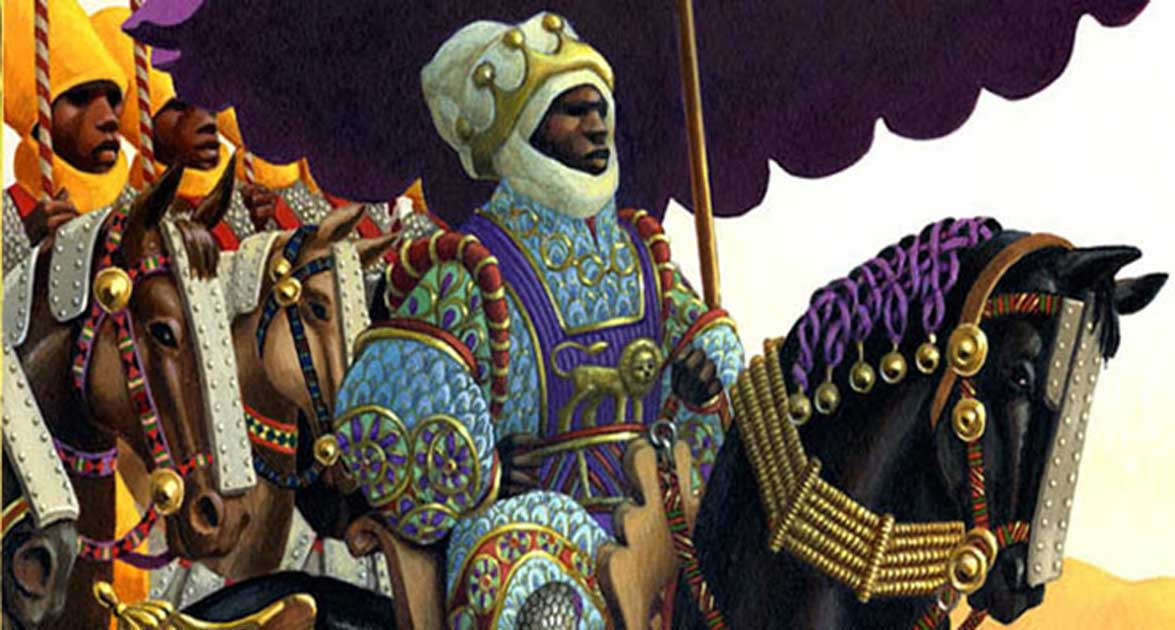Gold, Power, and Collapse: The Story of the Mali Empire

In West Africa, during the 13th and 14th centuries, one of the richest empires in history was born. The Mali Empire, which stretched across the Sahara Desert and into modern-day Mali, Senegal, Guinea, and Niger, was established through the discovery and trade of gold. Much of the world’s gold supply at the time came from this region, which allowed Mali to grow wealthy and powerful.
The wealth of the empire was built on the work of gold miners and traders who transported the precious metal across the Sahara. Salt was another important commodity traded alongside gold, as it was needed to preserve food. These goods were carried by camel caravans through vast deserts, where they were exchanged with traders from North Africa and beyond. It was through these routes that the Mali Empire became a center of trade, culture, and learning.
Mali’s location gave it control over the gold trade. The city of Timbuktu, located on the edge of the desert, became an important hub for traders, scholars, and travelers from many lands. It was in these years that the empire gained fame not only for its wealth but also for its knowledge and art. It was here that the future would be shaped by both gold and ambition.
The Rise of Mansa Musa
At the heart of Mali’s story stands its most famous ruler, Mansa Musa. He ruled the empire from 1312 to 1337 and is remembered as one of the wealthiest individuals in history. Mansa Musa’s reign marked the height of the Mali Empire’s power and influence. His wealth was so great that stories of his riches spread far beyond Africa.
One of the most remarkable moments in Mansa Musa’s life came in 1324 when he undertook a pilgrimage to Mecca. This journey, known as the Hajj, was required of all Muslims who could afford to go. However, Mansa Musa’s Hajj became legendary because of the immense display of wealth that accompanied him. It has been said that Mansa Musa brought with him thousands of servants and soldiers, along with hundreds of camels carrying gold.
As Mansa Musa passed through cities like Cairo, vast amounts of gold were given to the poor and used to buy supplies. It is said that so much gold was spent in Egypt that its value dropped, causing inflation that lasted for years. The world became more aware of the Mali Empire and its riches, and maps of the time even began to include Mali as a place of great importance.
Mansa Musa was not only concerned with wealth but also with strengthening his empire. Upon his return from Mecca, great buildings, including mosques and universities, were constructed. Timbuktu, in particular, became known as a center of learning, attracting scholars from all over the Islamic world. Libraries were filled with manuscripts, and the city became a beacon of knowledge in the medieval world.
A Gradual Fall into Chaos
Despite the great wealth and power of the Mali Empire, its decline was set in motion not long after Mansa Musa’s death. One of the main reasons for this fall was the sheer size of the empire. It had grown so large that it became difficult to govern. Regional governors, called fari, were put in place to manage different parts of the empire, but many began to act independently, weakening the central authority of the emperor.
As internal struggles increased, external threats also appeared. Neighboring kingdoms, sensing the empire’s weakness, began to attack Mali’s borders. The Songhai Empire, which had once been a part of Mali, gained strength and started to conquer Mali’s territories. By the end of the 15th century, the Mali Empire had shrunk dramatically, losing control over key trade routes and cities.
The importance of the gold trade also played a role in Mali’s decline. New gold mines were discovered further south, and trade routes shifted away from Mali. The empire, which had once been the center of the gold trade, was no longer able to rely on this wealth. As trade dwindled, so too did the empire’s influence.
By the time the Moroccan army invaded in the late 16th century, the Mali Empire had become a shadow of its former self. The cities that had once thrived on trade, such as Timbuktu, fell into decline. The empire was no longer able to defend itself against foreign powers, and it eventually collapsed. What remained were stories of its former glory, tales of wealth and knowledge that would be passed down through the ages.
Legacy of Gold and Learning
The collapse of the Mali Empire marked the end of one of Africa’s greatest powers, but its legacy lived on. The wealth of gold that had fueled the empire’s rise had also left an impact on the global economy. Trade routes across the Sahara would continue to be used by other empires, though none would match the Mali Empire’s golden age.
Timbuktu remained a symbol of learning, even after the empire’s fall. Though much of its glory faded, scholars continued to study in the city’s libraries, and manuscripts from that period still exist today. These records offer a glimpse into the Mali Empire’s contributions to knowledge and culture.
The Mali Empire’s rise and fall serve as a reminder of how power, wealth, and ambition can shape the course of history. Its story is one of incredible riches, wise rulers, and cultural achievements, but also of the difficulties that come with managing vast territories and relying too much on one source of wealth. Though the empire has long since disappeared, its impact can still be felt in the region and beyond.





